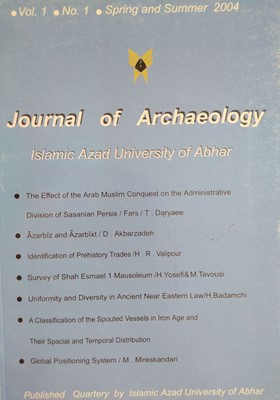-
-
List of Articles
-
Open Access Article
1 - Identification of Exchange in Prehistory
Hamidreza Valipour -
Open Access Article
2 - Archaeological Survey of Shah Esmael I mausoleum in Ardebil
Hasan Yousefi Mahmoud Tavousi -
Open Access Article
3 - Uniformity and Diversity in the Ancient Near East
Hosein Badamchi -
Open Access Article
4 - A Classification of the Spouted Vessels in Iron Age and their Spacial and Temporal Distribution
Amir Sadegh Naghshineh -
Open Access Article
5 - Global Positioning System
Seyed Mahmoud Mireskandari -
Open Access Article
6 - The Effect of the Arab Muslim Conquest on the Administrative Division of Sasanian Persis / Fars
Touraj Daryaee
-
The rights to this website are owned by the Raimag Press Management System.
Copyright © 2021-2025







